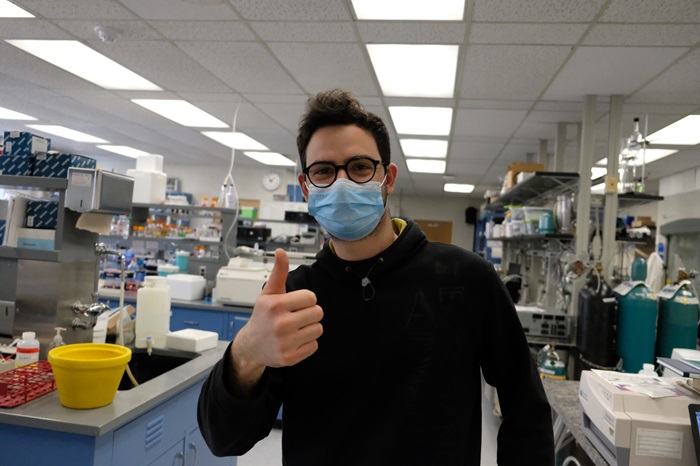26 March 2024

Isoprene is a biogenic volatile compound emitted by many different plants. Above ground, this compound protects plants from a range of abiotic and biotic stresses. But what happens belowground is less clear and it is this question that fascinated Manuel Bellucci, a PhD student in the Department of Science and Technology for Sustainable Development and the Campus Bio-Medico of the University of Rome (Italy).
With the help of a Travelling Fellowship from Development, Manuel could visit the lab of Professor Thomas D. Sharkey in the Plant Resilience Institute of Michigan State University (MI, USA). Professor Sharkey is one of the leading experts working on photosynthesis and isoprene emission in plants. Together, Manuel and Professor Sharkey developed an innovative project focused on the effect of isoprene on root development and physiology as well as stress tolerance — something that hasn’t been done before.
This project fitted in nicely with Manuel’s PhD work, which is broad in scope. Manuel has already explored the interactions happening above ground between the atmosphere, particularly air-borne determinants, and isoprene. Also, he has explored ways to develop a sustainable source of isoprene, which could support the use of this compound at the industrial level (e.g. for the synthesis of synthetic rubber and biodiesel). Now, in the lab of Professor Sharkey, the focus shifted to studying the interaction between isoprene and plants belowground. Can isoprene impact root development and abiotic stress tolerance? Moreover, can isoprene affect belowground communication used by plants?
To investigate these processes happening belowground, Manuel used techniques such as root phenotyping and performed numerous metabolomic and transcriptomic analyses. In doing so, Manuel observed that roots can emit isoprene, and that isoprene has a direct effect on root development and physiology by changing the root metabolome (e.g. hormones, amino acids and other metabolites) and transcriptome (upregulating genes involved in defence responses) — both in presence or absence of salt stress. He also noted that isoprene can sustain root development under severe salt stress conditions. As such, Manuel’s work in Professor Sharkey’s lab shows that isoprene can have a protective role in plants not only above ground, but also below the ground. These findings can open the door to further isoprene studies and push the boundaries of plant science.
It is therefore not surprising that Manuel has fond memories of his time in the lab of Professor Sharkey: “This lab visit has had a very positive and significant impact on my research. It not only allowed me to acquire new research skills, but it has enriched my doctoral experience. Furthermore, I am sure that this experience will also have a positive impact on my future career. I am very grateful to Professor Sharkey for giving me support, availability, and the opportunity to further develop myself as a researcher. I also thank The Company of Biologists for supporting my research and this fantastic experience.”








You must be logged in to post a comment.